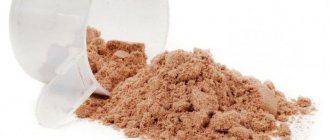Rice is an important cereal plant that feeds more than half of the world's population. Many varieties are grown, the grains of which differ in taste, appearance, nutritional and beneficial properties. The most common type is white rice, which is freed from the bran shell during the grinding process. Due to the loss of most of the beneficial substances contained in it, it is considered the least useful. A healthy diet includes brown (brown) brown rice, or alternatively, white parboiled rice.
When choosing one of the varieties, pay attention to the expiration date. Each type of cereal has its own, depending on the grain processing technology, conditions and region in which it is stored. We will tell you about the shelf life of rice, how to store rice at home and at what temperature, what happens to the grain over time, how to determine the quality of the grain and whether it is possible to use an expired product for food.
What do GOSTs say?
The storage rules and shelf life of rice are established by the international standard (GOST) 6292-93 “Rice cereals. Technical conditions" and national standard R 55289-2012 "Fig. Technical conditions".
According to these standards, rice is a grain processing product and has similar storage conditions and shelf life from 10 to 18 months from the date of production, depending on the type of cereal and region of origin.
The exact shelf life of different varieties of rice cereals is indicated in table No. 2 of GOST 26791-89 “Grain processing products.
Packaging, labeling, transportation and storage."
What kind of rice should you not eat?
Even dry cereals have their own suitability limits. Therefore, before preparing it, you need to make sure that it has not spoiled. First of all, pay attention to the smell and appearance of the rice.
Poor quality is indicated, in particular, by:
- musty smell (this indicates the presence of mold and fungi);
- black dots (usually bugs);
- unnatural shade (if it is not eliminated after washing, it indicates damage).
You won’t be able to make a tasty dish from such rice; all you have to do is throw it away. Even if the shelf life of the cereal is exceeded, do not worry too much: in proper conditions (which we will discuss below), it remains suitable for about another 1-3 months.
A product that has been in your cabinet for more than 2 or 3 years must be disposed of without any reservations, and don’t be confused by the fact that it looks quite decent. The thing is that rice, one way or another, always gets damp, because it mainly consists of very hygroscopic starch. Moisture accumulates in the cereal, even if it is kept in a tightly sealed jar.
Expiration dates in packaging and after opening
The shelf life of rice grains may vary depending on the type of product and country of origin, but it is the same .
Opening the package does not affect the shelf life of the rice in any way if the correct storage conditions .
- White rice can be stored for 16 (broken) to 18 months (milled) if it is of Asian origin. Rice grown in the territory of the former USSR can be stored from 10 (crushed) to 12 months (polished).
- Parboiled rice has the same shelf life as regular rice.
- A period of 16 to 18 months is also set for exotic types of rice: wild, dark, red, Basmati, jasmine and many other varieties. All these varieties have standard storage periods and conditions.
- Shirataki noodles , often called Shirataki rice due to their similarity in appearance, are actually not related to rice grains. Therefore, the shelf life of this product differs from the shelf life of rice and is 12 months before opening the package and 7 days after opening.
Read about the shelf life of cakes here.
How to choose
Before you go to the store to make a purchase, you need to decide what the oil will be used for.
- If vegetable fat is intended for preparing salads or cold appetizers, it is better to choose an unrefined product. It contains large quantities of vitamins and fats that will make any salad healthy.
- Refined oil is better suited for frying; it is not advisable to use anything else.
Top articles: How to cook honey mushrooms before frying
The difference between refined and unrefined products lies in their purification and processing.
- Unrefined milk is not processed in any way after cleaning. It is divided into grades: highest and first. Both have a pleasant characteristic taste and aroma. They do not have a bitter taste and do not form sediment. Although in the second grade these signs are sometimes present.
- Refined products undergo complete purification from various impurities that can form sediment and affect the taste. This list also includes useful components. Such a product can be immediately recognized by its light color and lack of pronounced taste. The smell of such a product is also much weaker than that of an unrefined product, especially if the product is deodorized or frozen.
Even proper storage of vegetable oil cannot be called successful if the product does not meet certain requirements from the very beginning.
In order for sunflower oil to have a long shelf life, great attention must be paid to the integrity of the packaging. If the container is damaged or has visible signs of a leak, the oil will not be stored for long.
If the product was on a lighted display case, it is better to refuse to buy it immediately: sunflower oil should be stored in a dark place. You should also pay close attention to its production date, so as not to buy a product that has practically expired.
How to store at home?
Rice groats are a fairly unpretentious product that can be stored at room temperature, although for ideal conditions the recommended temperature is from +5 to +15°C.
To store cereals, it is better to use airtight containers made of glass, plastic, ceramics or tin. The container lid must be tightly closed .
Also, the “old-fashioned” method of storing cereals in linen bags has not lost its relevance.
Rice groats belong to the category of products that do not tolerate moisture well, so the recommended air humidity should not exceed 60-70 percent.
Lighting does not play a significant role, since the cereal is stored with the lid closed, but in order to avoid negative consequences, it is better not to place the container in direct sunlight.
Rice is best stored together with other grains and avoid the proximity of odorous foods.
The main enemy of rice, like any other cereal, is pests , which include various bugs, for example, flour bugs or food moths.
You can protect yourself from them not only by tightly closed containers and blocking access to the cereal, but also by several folk remedies. get rid of bugs if you put them in a storage container:
- garlic cloves;
- Bay leaf;
- chilli;
- dried lemon zest or other pungent or odorous foods.
If you have to store rice for a long time, then it would be useful to add a small bag of salt , which will protect the grain from excess moisture and prevent the appearance of a musty smell.
Surprisingly, metal objects repel pests, so you can “forget” a spoon in the cereal or put in a few metal stoppers.
How long to store boiled rice
Rice can expand greatly when cooked and it is not always possible to predict how much of the product will be obtained after heat treatment. In addition, some people specially prepare rice for several days. In this case, boiled rice is stored in the refrigerator in a sealed container. If the rice is cooked without additives, it can be stored for up to four days.
Any additives change the shelf life of boiled rice.
- Spices. Often during cooking, turmeric, cumin, asafoetida or other spices are added to rice, which, being biologically active, accelerate all processes, including decomposition, which reduces the shelf life of rice.
- Milk. Milk porridge can be stored for no more than a day.
- Meat, vegetables. Meat or vegetable pilaf, as well as rice-based salads with vegetables, can be stored for no more than two days.
If more time has passed or the rice has been taken out and reheated, make sure it is edible! Spoiled rice will become sticky, and an unpleasant odor or color change may appear.
If you do not plan to consume rice within the specified time frame, it can be frozen.
It is best to freeze boiled rice without additives. A plastic container or plastic bag is suitable for this. It is optimal to use vacuum bags for freezing.
When freezing rice, make sure that the package is tightly closed and there is no access to air, otherwise it will dry out too much.
There are also dishes that are traditionally prepared in advance and frozen - stuffed peppers, cutlets. All of these products contain a minimal amount of liquid. You should not freeze rice with sauces, the taste of the dish will greatly deteriorate and the shelf life will be reduced. At a standard temperature of -5°, frozen rice dishes will last in the freezer for up to eight months.
Storing boiled
How long can boiled rice be stored? Cooked rice, left for any purpose or dish, must be stored in the refrigerator, keeping in mind that cooked rice absorbs odors very well.
Therefore, the ideal container for storing cooked rice is a plastic container with a tightly closed lid, but it is still better to move odorous products to another shelf.
Observing these conditions, you can store cooked rice for 3 days , but it is recommended to carry out heat treatment before use.
You can also put cooked rice in the freezer; when frozen, it retains its quality for up to several months.
Storing cooked rice at room temperature is only permissible for a few hours, after which it may turn sour.
How to properly store rice?
Find out from the video:
Signs of damage
A careful inspection of the cereal before purchasing will help you avoid possible problems during storage. The following signs indicate that the product is of poor quality :
- the presence of stuck together lumps;
- unpleasant odor;
- black spots on grains;
- traces of mold;
- presence of insects or their larvae.
If the packaging is opaque and its contents cannot be assessed, pay attention to the production date. The fresher the cereal, the higher the likelihood that the product is of high quality.
Is it possible for rice to be poisoned if stored improperly?
Yes, it's possible. The danger is posed by cereals with signs of mold and a musty odor . Such a product will remain dangerous even after heat treatment.
Also, you should not eat cereals that have expired , even if there are no visible signs of spoilage.
What happens to cereal over time?
Rice grains, which contain a large amount of starch, gradually absorb moisture during long-term storage, which leads to spoilage of the grain.
Even under ideal storage conditions, this process cannot be frozen or stopped, so sooner or later the rice will become soggy. Dampness inevitably leads to the appearance of mold fungi in the cereal, which will completely ruin the product.
You will find recommendations for storing cocoa on our website.
Signs of unsuitability for consumption
It is impossible to completely protect rice from contact with moisture, even if all recommendations regarding proper storage are perfectly followed.
At some point, dampness , which will lead to mold fungi that destroy any product.
Signs of mustiness and yellowing of grains may indicate the appearance of mold fungi.
is categorically unsuitable for consumption , as is the case with damp cereals or cereals in which pests have infested.
If you only saw the expiration date label after purchase at home, and the rice turned out to be expired, return it to the store . You have every right to return the money or receive a similar quality product.
In case of refusal, make a complaint about the quality of the product to the head of the organization, as well as a review in the complaint book.
If these actions do not help, then Rospotrebnadzor will have to be involved. The authority conducts an inspection and, upon violation, imposes a punishment on the organization in accordance with legislative norms.
Features of storing cooked rice
Rice porridge cooked in milk should be eaten within 24 hours. Rice that has been cooked without adding oil will not lose its taste for 3 days. But provided that it is stored in an airtight container that prevents the absorption of odors from other products.
Some housewives quite successfully practice storing boiled rice in the freezer. When deep-frozen, this side dish lasts well for 3 months, but when thawed, it may turn out to be slightly dry, so it is better to defrost it in a double boiler.
But all this applies to high-quality, unexpired cereals, but it happens that even in fresh packaging there is some kind of suspicious rice.
Useful tips
If there are signs of harmful insects in the cereal, then when there are only a few of them, you should not immediately throw the cereal away - you can try to save it. So, if you freeze such rice in a low-temperature chamber for 3-4 days, the pests will die. Then the product is washed well and can be used for cooking. However, if there are a lot of pests, then it is better to dispose of spoiled cereals. To prevent insects from appearing in rice, you can add the following pest repellent additives to the container in which it is stored:
- a couple of unpeeled garlic cloves;
- 1-2 pods of hot pepper (dried);
- several dried pieces of lemon peel;
- 2-3 whole bay leaves.
It is permissible to keep cereals in linen bags - this way the product can “breathe”. But, they need to be boiled in a concentrated salt solution - then beetles, worms and moths will not grow in the rice. To prevent dampness, put one gram per 50 gram inside - at the bottom or in the middle of the bag, into which salt is poured, which draws away moisture unnecessary from the cereal and prevents the product from becoming moldy. However, after 12-18 months, the cereal may deteriorate, so you need to check its condition regularly. Signs indicating that rice has expired are:
- musty smell from grains;
- darkening of shade;
- sour or rancid aroma when cooked in water.
On a note! If you follow the storage rules, the cereal can be boiled even after 1-2 months from the end of its shelf life. However, such a product will no longer contain useful compounds.
Dry rice has a limited shelf life and a maximum shelf life of 18 months. If the product is not processed in production - its shell is preserved, it is not steamed or polished, then it can be used for up to 10-15 months, the exact time depends on the country in which the product was grown. For exotic varieties the timing is the same. In the case of boiled rice, without refrigeration, it will spoil in 1.5-6 hours, and for chilled rice, the maximum storage time is 6 days. You can freeze the porridge; it will be suitable for consumption for up to six months, but its consistency and taste will deteriorate.
A food product requires special attention to how it is contained
Following simple rules ensures that the cereal does not lose its beneficial properties and does not harbor bugs and larvae. First of all, when purchasing rice, you need to familiarize yourself with the date of its production and packaging. This food product retains its taste and nutritional characteristics for one and a half years (including sales in stores). For milled rice, this period can be extended to several years.
The quality of rice is always determined by the place where it is stored, from the warehouse to the container for the finished product. When purchasing a cereal crop, the buyer must carefully examine it for the absence of dark grains, debris, including bugs. But it is not always possible to visually determine the quality, especially when it comes to a weight product.











